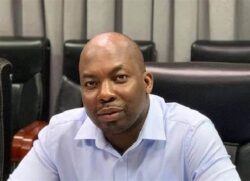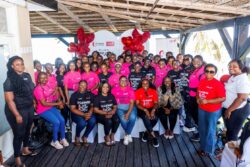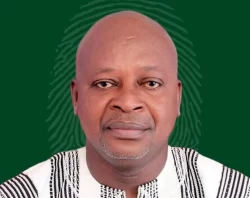By Kosi DZOKOTO
Unemployment and stagnant economic growth are among Ghana’s most pressing challenges, with the youth bearing the brunt of these issues. According to the 2021 Population and Housing Census, nearly 20% of young Ghanaians are unemployed, with the situation even more dire for those aged 15-24, where unemployment stands at 32.8%.
For women, the statistics reveal a persistent disparity, with 15.5% unemployed compared to 11.6% of men. Addressing these challenges requires bold, transformative action.
John Mahama’s Big Push for National Infrastructure Development offers such a vision—one that prioritizes job creation, inclusive growth, and sustainable development. This initiative aims to reshape Ghana’s economic and social landscape through massive infrastructure investment, completion of abandoned projects, empowering youth, and innovative financing strategies.
Unpacking the big push: Transforming challenges into opportunities
Accelerated infrastructure plan
At the heart of the Big Push is a US$10 billion infrastructure investment plan. This ambitious program aims to create jobs and drive economic growth by modernizing Ghana’s infrastructure.
The plan includes constructing and upgrading essential facilities such as roads, hospitals, schools, and transportation systems. Beyond meeting immediate needs, these investments will have long-term benefits by enhancing trade, improving access to services, and stimulating private sector activities across all regions.
Reviving uncompleted and abandoned projects
Ghana is littered with numerous uncompleted and abandoned government projects, representing wasted resources and lost opportunities. The Big Push proposes a comprehensive inventory of these projects, with a commitment to prioritize and complete those that are critical and feasible. This approach maximizes the impact of past investments while ensuring resources are efficiently allocated to deliver immediate and tangible benefits to communities.
Empowering youth through infrastructure development
Ghana’s youth face significant barriers as they transition from school to work, including skills mismatches and limited job opportunities. Recognizing this, the Big Push includes a targeted initiative to mobilize and train young people for labour-intensive infrastructure projects. This not only provides immediate employment but also equips young people with valuable skills in construction, project management, and technology, laying the foundation for sustainable livelihoods.
Restructuring infrastructure financing
Effective financing is critical to sustaining development efforts. The plan includes restructuring the Ghana Infrastructure Investment Fund (GIIF) to streamline administration and consolidate additional infrastructure development funds.
This reform ensures that resources are utilized efficiently and transparently while encouraging private sector participation to bolster government efforts. By addressing financing challenges, the Big Push paves the way for consistent and sustainable infrastructure development.
How the big push will transform lives
Job creation and economic empowerment
Infrastructure development is a powerful driver of job creation. From construction workers to engineers, the Big Push will generate employment opportunities across a range of sectors. Additionally, the focus on labour-intensive projects ensures that job opportunities are accessible to people with varying skill levels, including those in rural areas.
Boosting trade and economic growth
Improved infrastructure facilitates trade by reducing transportation and logistics costs, opening up markets, and enhancing regional connectivity. By investing in roads, ports, and railways, the initiative will help Ghana achieve its potential as a hub for trade and commerce in West Africa.
Equitable development across regions
One of the standout features of the Big Push is its commitment to equitable development. By targeting projects across the country, the initiative aims to bridge the rural-urban divide, bringing essential services and economic opportunities to underserved areas. This focus on inclusivity ensures that no region is left behind.
Empowering the next generation
The youth-focused component of the Big Push addresses both immediate unemployment and long-term skills development. By involving young people in infrastructure projects, the program provides them with hands-on experience while preparing them for future opportunities in a rapidly evolving job market.
Restoring public trust in governance
Completing uncompleted and abandoned projects is more than just an economic strategy; it’s a statement of accountability. This commitment demonstrates the NDC’s dedication to continuity and efficient use of public resources, restoring trust between citizens and their government.
Why the big push matters now
In a time of growing economic uncertainty, initiatives like the Big Push are essential for stabilizing the economy and creating a foundation for long-term growth. Ghana’s young population is its greatest asset, but without meaningful opportunities, this demographic dividend risks becoming a liability. The Big Push not only addresses unemployment but also fosters an environment where innovation and enterprise can thrive.
Furthermore, the focus on inclusive development aligns with global best practices for sustainable development, ensuring that Ghana’s progress benefits all citizens, regardless of their location or background.
Conclusion
John Mahama’s Big Push for National Infrastructure Development is more than an economic policy—it’s a vision for a better Ghana. By addressing unemployment, bridging development gaps, and fostering sustainable growth, this initiative lays the groundwork for a brighter, more prosperous future.
The Big Push is a testament to the NDC’s commitment to transforming challenges into opportunities. It represents hope for the unemployed, empowerment for the youth, and progress for the nation. Under this plan, infrastructure becomes more than a means to an end—it becomes the cornerstone of a thriving, equitable Ghana.










